What am I? (There are two distinct entities.)
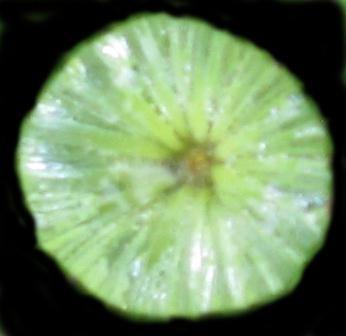
Answer and a complete photo on Monday!
Sunday addendum:
No guesses yet…maybe it’s too tough? Here’s a more revealing photo:

This time of year is tough for folks who do work with plants. It’s the happiest time of year because the world is turning green again, but it’s also the busiest time of year because we need to be inside teaching, outside planting, and also on the road since spring talks are finishing up. Honestly I’m having trouble finding an hour to myself to work on writing up papers and articles.
That said, let me leave you with something that’s been bugging me the last few days (based on an article I read a few years ago). If a person were in inhale a small seed, would it grow into their lungs?
What do you think? Real or BS?
It’s almost May…and it’s still raining. Even for our normally wet spring climate, this has been an unusually soggy year. I’m also blaming the weather on my 3rd or 4th cold so far this year, which has knocked me flat for the last 6 days (which was why I had no Friday puzzle posted). So in between blowing my nose, hacking my lungs out, and generally feeling sorry for myself, I started looking over 10 years’ worth of photos of our home landscape.
You’ve seen bits and pieces of this before in some of my postings. But one of the spots I’m most proud of is the tiny east-facing side yard that originally contained lawn, a lilac, and a border of arborvitae. Within the first few years the lawn came out and plants started going in. In 2004 I’d installed some small rhododendron, a redbud (left foreground), and a whole lot of woodchips:
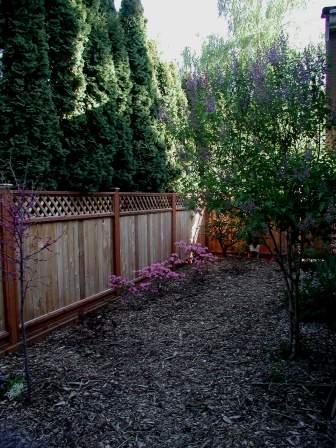
Since then we removed the lilac (it had been planted too close to the garage and was a powdery mildew magnet), put in an arbor and wisteria (on the right), and added a few more plants (ferns, bleeding hearts, various bulbs and tubers, etc.). Here it is two (2006) and five (2009) years later:
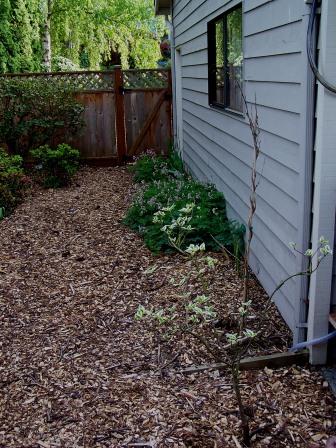
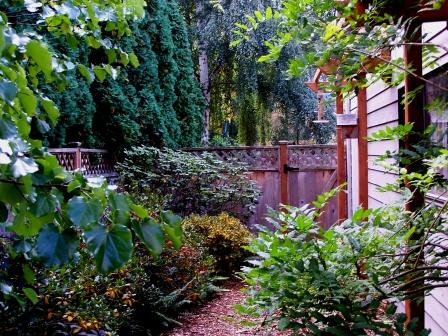
This year we’ll finish off the area with some flagstone pavers.
One of the main reasons I’m so pleased with this area is that it was inexpensive to redo and it established quickly. We bought the redbud, the wisteria, and the bulbs, but the rest were donations from friends’ gardens, or volunteers that popped up elsewhere in the yard, or plants that someone else wanted removed (like the larger rhody in the far left corner and the dogwood in the right foreground, 2006 photo). The chips were free; the flagstones were a major score from craigslist (free to whomever would pry them up and lug them out). All the purchased trees and shrubs were barerooted; and root-pruned if needed before planting. Upkeep is minimal except for a bit of pruning and spot watering during the hottest summer months; we’ve lost no plants other than the occasional bulb poaching by squirrels.
It’s just a little bitty sideyard…but I enjoy walking through it every time I’m outside, even in the rain.
As I noted last week, this has been a long winter in Michigan – OK, Jeff, no chortling from the frozen tundra of Minnesota… Most gardeners in this area have only been able to do their spring yard and garden clean-ups in fits and starts as the weather allows. We’re finally warming up a bit this week but now strong storms are in the forecast. One of the things gardeners will want to do is to size up any winter damage that has occurred since they put things to bed last fall. Although our winter was long, it was otherwise unremarkable with few temperature extremes – low or high – that would likely cause problems. In fact, aside from some heavy snow in February, the winter of 2010-11 was probably the closest thing we’ve had to a ‘normal’ winter in the 11 years I’ve lived in Michigan. Nevertheless, we will still be taking numerous extension calls on what we would consider ‘typical’ winter damage to trees and shrubs.
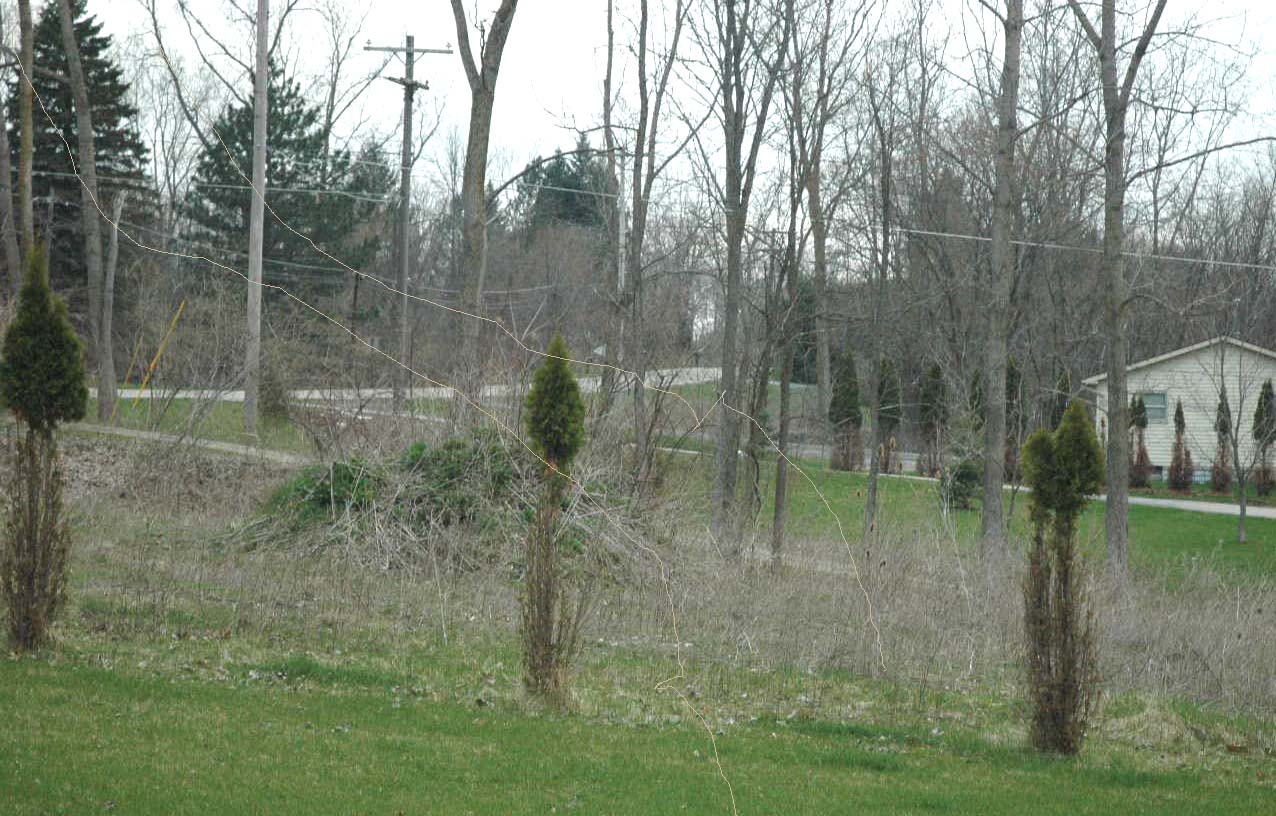
In this neighborhood not too far from my house, deer have declared open season on arborvitae.
One of the biggest issues we face is wildlife damage. The two biggest sources of problems are small mammals and deer. Small mammals such as mice, rabbits, squirrels and voles cause damage mainly by gnawing on trunks and branches. Despite their small size, these animals can kill trees by removing bark and underlying tissue around the circumference of a tree trunk, a process referred to as ‘girdling’. If a large portion of trunk circumference has been girdled, trees are unable to move energy reserves between roots and shoots, and will eventually die. Deer can cause extensive damage to trees and shrubs due to feeding and also through rubbing their antlers. Deer feeding is often indicated by a ‘browse line’ based on how high deer can reach. Rub damage from deer antlers can cause major deformation to trunks and can even kill trees by girdling. I was in a new subdivision in the East Lansing area this weekend and well over half of the trees on the tree lawns will need to be replaced due to extensive deer rub damage.
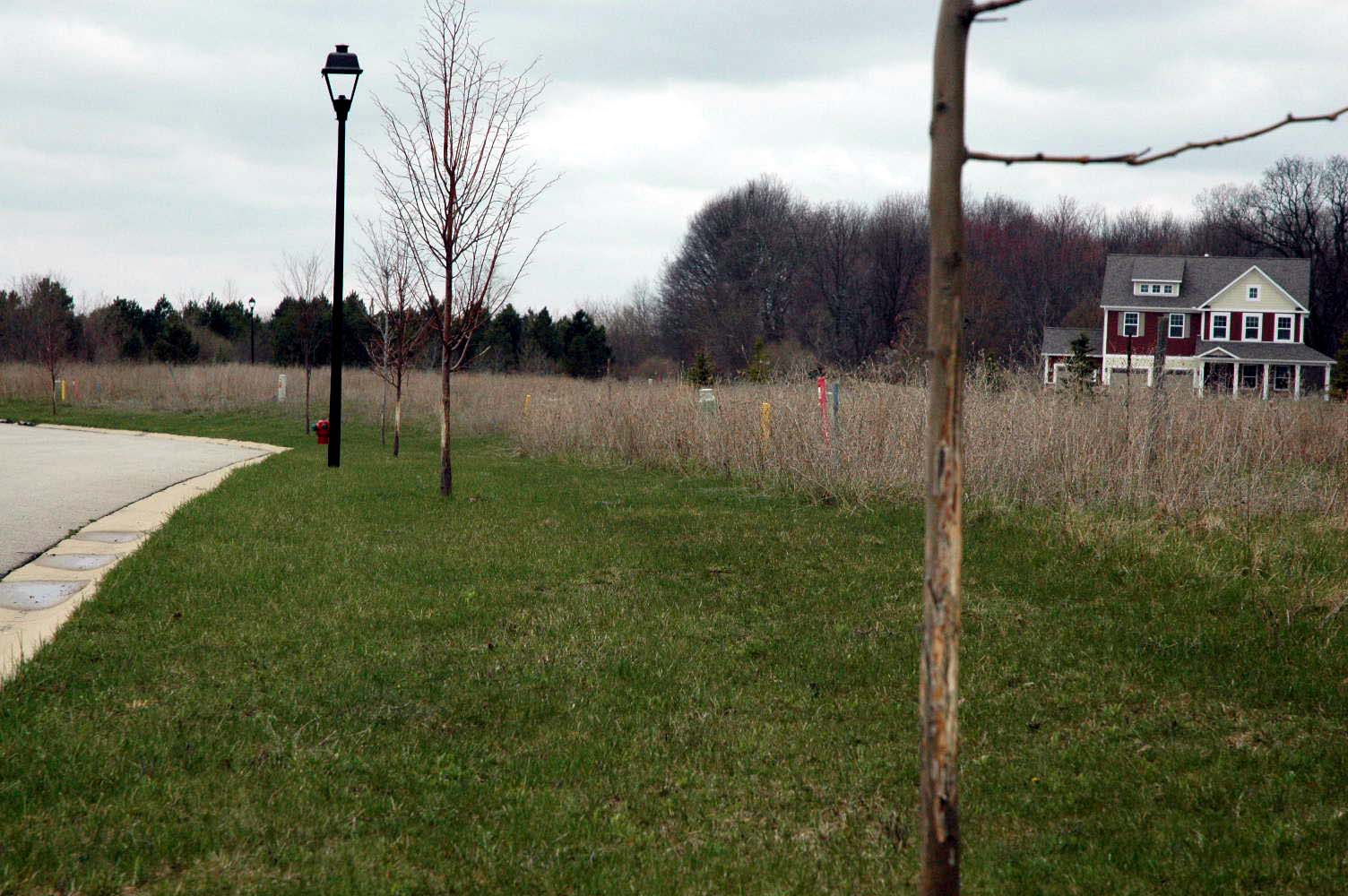
At least half of the trees in this entire subdivision will need to be replaced due to deer-rub damage.
Dealing with wildlife damage is a complex issue and varies with local conditions and wildlife pressure. Fortunately, wildlife experts from several universities (Cornell, Clemson, Nebraska, Utah State) have organized the Internet Center for Wildlife Damage Management. http://icwdm.org/ This site is one of the best resources I have run across for assessing and dealing with wildlife damage issues. If you’re in a position where you have to deal with wildlife damage or advise clients about damage, this is a useful site to add to your bookmarks.

This has been an exciting week for me. On Monday we started cleaning off 72 rootballs of various tree species that had been planted 5 years ago for a study. These trees had been planted in containers and become potbound at the nursery from which we received them. We treated them in one of three ways. Either we did nothing (in other words we just dropped the pot bound tree in a hole), we used the standard methods that Universities recommend for slicing potbound roots (Four deep slits down the sides and a deeply cut X across the bottom), or we cut off all of the circling roots by cutting the pot bound root system into a box shape.

A root ball cut into a box shape
The plan was to harvest after 4 years to see what happened – we decided to wait 5 – and boy did we see some interesting stuff. At this point our results are preliminary – we need to run statistics before we can say anything conclusively – but this is what my eyes tell me.

This root system was from a control — no root pruning at all, but still plenty of large roots.
No matter what the results/statistics end up saying there will be more questions. For example, all else being equal, how damaging are circling roots to the health of a tree if the tree is planted properly (no stem tissue under the surface of the soil) and the circling roots are under the surface of the soil? If the answer is that circling roots under the surface of the soil aren’t very damaging (after all, there’s no stem tissue for them to crush) then why are we bothering to try to root-prune pot bound plants at all – what we should really be concentrating on is planting at the proper depth.
All the above is hypothetical though – I just enjoy thinking about this stuff as the data starts to roll in. As we get more definitive answers and start to run the statistics I’ll let you know more.
Spring (in either hemisphere) is an incredibly busy time for anyone even remotely associated
with horticulture – a frenzy of growing, selling, buying, planting, and
information-disbursing. If gardening were this wildly popular year-round, there might even be some money to be made. For us Hort faculty, spring means field trips, student plant sales, cramming even more plants
onto an identification test (heh), tons of consumer questions, research projects coming and going, and many many speaking engagements. As gardeners, we’re also trying to get all that stuff done, too – weeding, mulching, planting recent purchases or gifts from plant-sharing friends (the best kind). It’s hard to slow down and enjoy spring. Joel and I did a “forced pause” last evening before dusk. We put down the implements, poured some white wine, and simply wandered around our garden. So many things coming up and out; it was breathtakingly lovely, all the fresh foliage and flowers, basking in the last of the day’s sunshine. Please don’t let spring rip past without stopping to sniff the
Convallaria. Unless it’s still under snow (sorry Bert!).
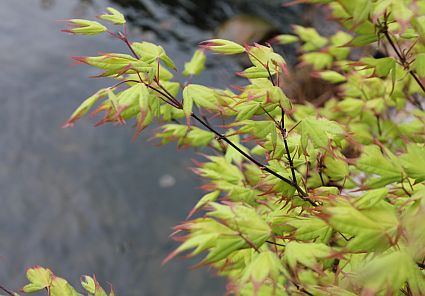
My favorite little Japanese Maple – Acer palmatum ‘Tsuma gaki’. Looks like she just got her nails done.
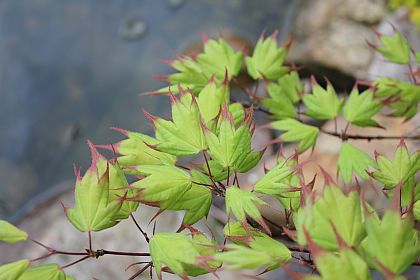
Soil solarization is regarded as an environmentally friendly alternative to pesticides for controlling nematodes, weeds and disease. Sheets of plastic (generally clear) are spread over the ground and solar energy heats the soil underneath to temperatures as high as 55C (or 131F). Since the soil environment is usually insulated from temperature extremes, the organisms that live there are unlikely to be resistant to heat stress.
This is a practice best suited to agricultural production, where monocultures of plants have attracted their specific diseases and pests. Decades of research have shown success in controlling pests in greenhouses, nurseries, and fields. But there’s a down side to this chemical-free means of pest control.
It shouldn’t be surprising that beneficial soil organisms, in addition to pests and pathogens, are killed by solarization. Studies have found that soil solarization wipes out native mycorrhizal fungi and nitrogen-fixing bacteria. One expects that other beneficial microbes, predacious insects, and parasitoids living in the soil (but so far unstudied) would be eliminated as well.
This may be an acceptable loss to those who are producing crops; soil can be reinoculated with mycorrhizal fungi, for example. But for those of us caring for our own gardens and landscapes, this is literally overkill. (And consider that most of us probably have trees and shrubs whose fine roots extend over our entire property.)
So this spring, instead of solarizing your soil, consider some less drastic measures of pest and disease control. Minimize soil disruption to preserve populations of desirable microbes. Plant polycultures (more than one species) in your vegetable garden, or at least practice crop rotation. Protect and nourish vegetable gardens with compost. Use coarse organic mulches, which provide habitat for beneficial insects and spiders, in landscaped areas. Above all, try to treat your soil as the living ecosystem it is, rather than a war zone.
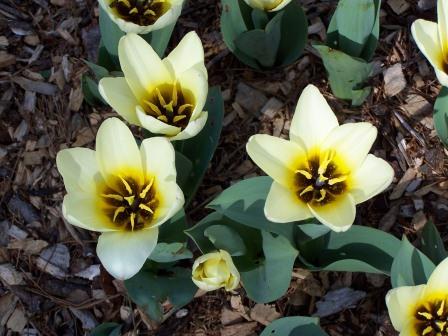
The odd oak in Friday’s photos is shin oak, or Quercus sinuata var. breviloba:
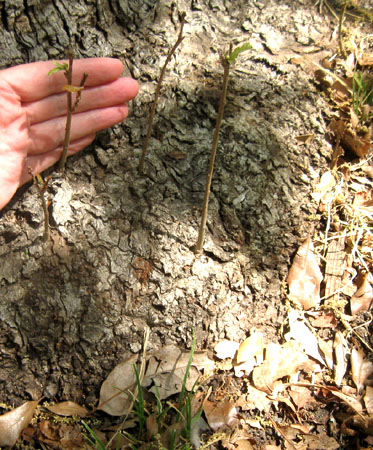
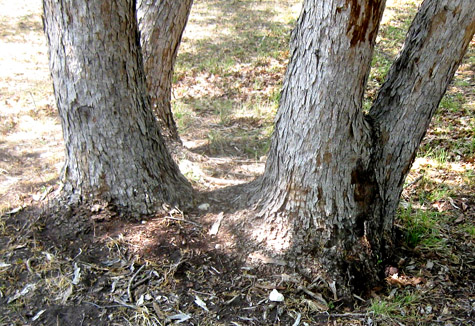
This trunk “puddle” is a really cool adaptation called a lignotuber (good job Matilija!) or burl. These are common in woody plants found in wildfire zones. New sprouts can arise after fires have roared through, or perhaps after heavy browsing by deer, as the park ranger suggested to Ginny, our guest inquisitor.
Thanks, Ginny, for sharing the photos and question. If you have an interesting plant quiz topic, preferrably with pictures, feel free to pass it on for our Friday Question!
Reader Ginny Stibolt passed this one on to mull over the weekend:
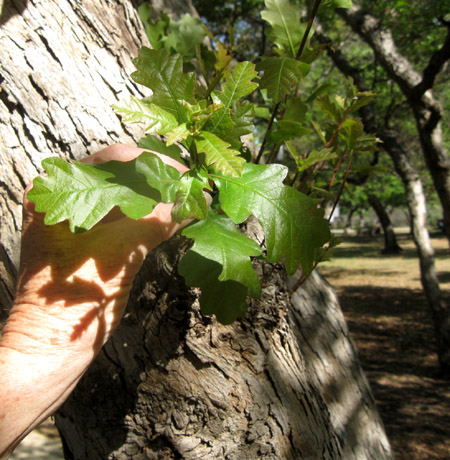
“We stayed at the Llano River State Park in Texas where I spotted this weird growth pattern of a gnarly oak–it’s like a puddle of trunk from which the main trunk arises. The camp host, who seemed to be well informed, said that these were Spanish oaks in the white oak division and that a root disease causes the expansion of the base of the trees. About 1/4 of them, here in the camping area, have this malady and often new sprouts grow from the wide base. Spanish oak does not seem to be the “correct” common name, and in looking at the native oaks for Texas, I couldn’t readily identify it. So a mystery or two…”
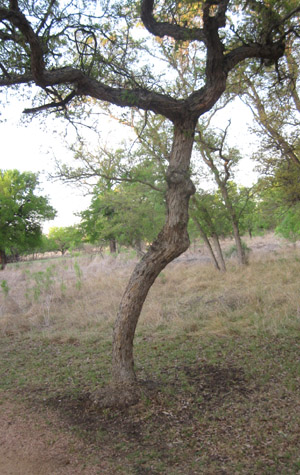
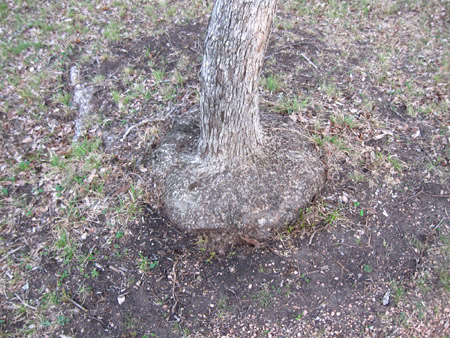
So what kind of oak is this, and why does it have this weird trunk base?
Ginny has an update, and I’ll post it on Monday.